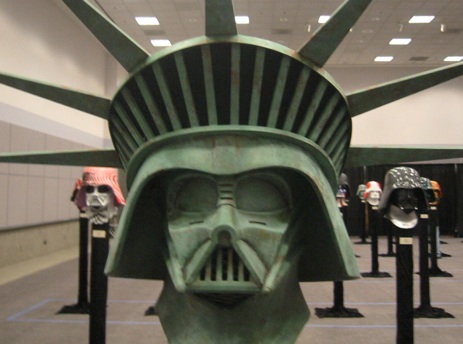Last week the President unveiled his “Strategy for American Innovation” which details his approach to jumpstarting the American economy by investing in important areas such as clean energy, health care technology, and education. This week he hits to road in an effort to get folks excited about modernizing our infrastructure. As a climate champ, this all sounds great to us. More mass transit, more science, more education, healthier people, more clean energy—bring it on! Yet, the President’s approach misses an opportunity to highlight a critical aspect to our economic and social wellbeing. To my surprise, the word “ecosystem” appears at least twice in the Strategy’s Executive Summary! Yet, despite even using this rather green word to describe his vision for both information technology and entrepreneurial development goals, the President failed to highlight the need to invest on our real, natural ecosystems.
America’s Green Infrastructure, the diverse collection of wildlife, forests, coastlines, lakes, rivers and grasslands that provide us with billions of dollars worth of services every year, is in desperate need of investment—and investing in this backbone of our economy can protect and create jobs while enhancing our public health and wellbeing. For example, our National Wildlife Refuges alone have roughly $360 million in critical backlogged invasive species control projects. These types of projects can create jobs that use the latest and greatest American science and know-how to protect important local resources. Or check out the work needed on our National Forests: by re-vegetating unneeded roads alone we could bring back an area larger than Rhode Island to a natural state—and store additional carbon the equivalent of taking up to 8.8 million cars off the road for a year! This work can kick start a spider-webbing economic impact across communities as experts ranging from scientists to construction crews are hired and related firms from equipment suppliers to local dinners benefit. For these reasons, investments in restoration and conservation create more jobs per dollar than any other economic activity.
Investing in our green infrastructure can pay larger dividends than investing in cement-based solutions to the climate crisis. Think about it this way: the day a construction crew wraps up the installation of a sea-wall to buffer against coastal storms that wall is at its strongest. Every day that wall is getting weaker, and over time costs to maintain it only increase. Contrast that to a coastal restoration project where crews rehabilitate an area to serve as a natural coastal buffer. The day crews leave that site the system is just the starting point— from then on plants take root and grow, wildlife returns, and the ecosystem strengthens… providing additional benefits including cleaning our air and water, recreational opportunities, etc. In short, ramping up green infrastructure investments is good for the economy, public health, community safety, oh, and the planet.
Don’t believe me? Then stop by this year’s Good Jobs, Green Jobs conference to hear experts share their experience in the field. We have a rock-star panel including policy experts Glenn Hurowitz and Trisha White, planning and implementation expert Sean McGuire from Maryland’s Office for a Sustainable Future, and climate-smart conservation guru Keith Underwood.
Don’t get me wrong- the President’s “Winning the Future” platform includes lots of important priorities. But this approach fails to take head-on the most pressing issue of our time—and if we don’t win the climate fight all our hard work in other areas will be undercut. It’s time to get the whole job done: investing in a clean, green energy economy and in keeping our wildlands resilient in a warming world.
This post was primarily written by The Wilderness Society’s JP Leous and is cross-posted on the blog Care2. Follow JP on Twitter: @twsjp



